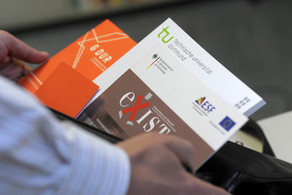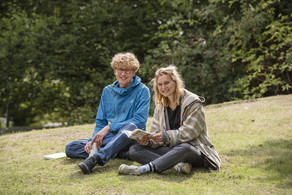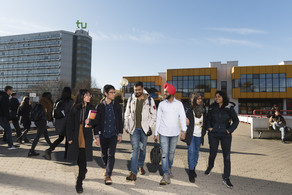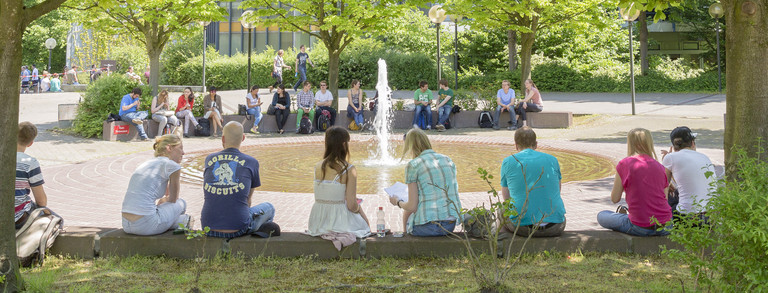University Successfully Saved Heat and Electricity in 2023
- Top News
- Campus & Culture
- Higher Education Policy
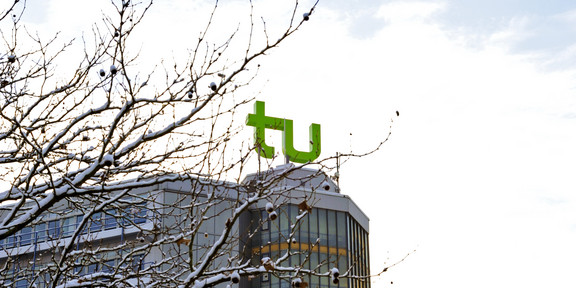
In 2023, the university saved 35 percent heat and 19 percent electricity, adjusted for weather conditions, compared to the reference year 2018*. It continues to focus on measures to reduce gas and electricity consumption.
In accordance with the German Energy Saving Ordinance EnSikuMaV, a maximum heating temperature of 19°C still applied in the first quarter of 2023; following the expiry of the crisis-related special regulation, the temperature was increased to 20°C in the current heating period. Several measures that have been implemented since 2022 as a result of the energy crisis remain in place: for example, the night mode has been brought forward by two hours and the heating system also remains in night mode during the day at weekends, with the exception of study workstations for students. University employees make a major contribution to saving heat by turning down thermostats so that their rooms are not heated unnecessarily when they are absent.
Saving electricity
Last year, the university also designed additional energy-saving measures to save electricity. In the lecture halls of HG II and the Audimax, the fresh air supply is now automatically regulated based on the CO2 content in the room air. This enables variable ventilation that adapts to room utilization and thus saves between 25% and 75% electricity. A pilot project at the Department of Biological and Chemical Engineering is aiming in the same direction: Here, a flexible ventilation system has been set up for new laboratories, whereby a high level of air exchange is only activated when working with hazardous substances, thus saving energy during normal operation. In addition, the temperatures in all server rooms at TU Dortmund University have been gradually increased on a trial basis since fall 2022 in order to save electricity for cooling. In addition, one of the largest electricity consumers on campus, the electron storage ring at the Center for Synchrotron Radiation DELTA has been operated in energy-saving mode since the end of 2022.
Universities in NRW use CO2 accounting tool
In order to become climate-neutral by 2023 as part of the climate-neutral state administration of the state of North Rhine-Westphalia (NRW), TU Dortmund University has been participating in a working group since May 2022, in which all universities in NRW as well as the Ministry of Economic Affairs (MWIKE) and the Environmental Agengy (LANUV) are represented . Together, they are working on a balancing tool to record CO2 emissions that are caused by heating, cooling, other electricity consumption, and business trips. As part of a continuous improvement process, the accounting tool will be further developed and will be expanded to include additional sources of emissions in the future.
More information on energy consumption at TU Dortmund University
A graph in the Service Portal provides a daily updated overview of the university’s electricity and heat consumption. It shows the hourly consumption of the last 30 days depending on the outside temperature. More information and data is available in the Energy Portal.
* 2018 was chosen as the year of reference in order to exclude special effects due to the corona pandemic (2020-2021) and alterations at the university’s energy network (2019).


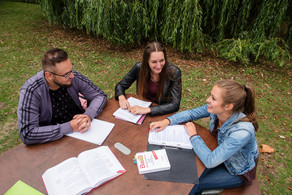
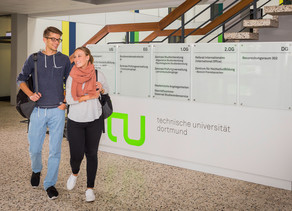
![[Translate to English:] Partner Four hands are holding the green logo of TU Dortmund University](/storages/tu_website/_processed_/1/d/csm_Partner_Nicole_Rechmann_KW_40b35bb3fd.jpg)

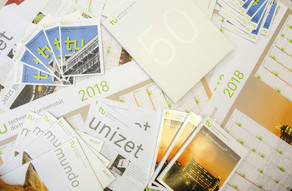
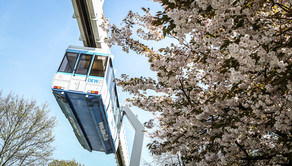
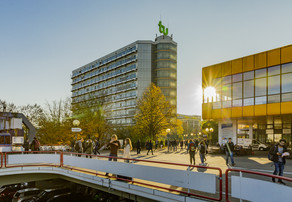
![[Translate to English:] Forschung An apparatus with tubes in a laboratory](/storages/tu_website/_processed_/0/c/csm_Forschung_Juergen_Huhn_cbd34afd6d.jpg)
![[Translate to English:] Studium Five students are sitting in a lecture hall. They are talking to each other.](/storages/tu_website/_processed_/c/9/csm_Studium_FelixSchmale_81d94adc86.jpg)
